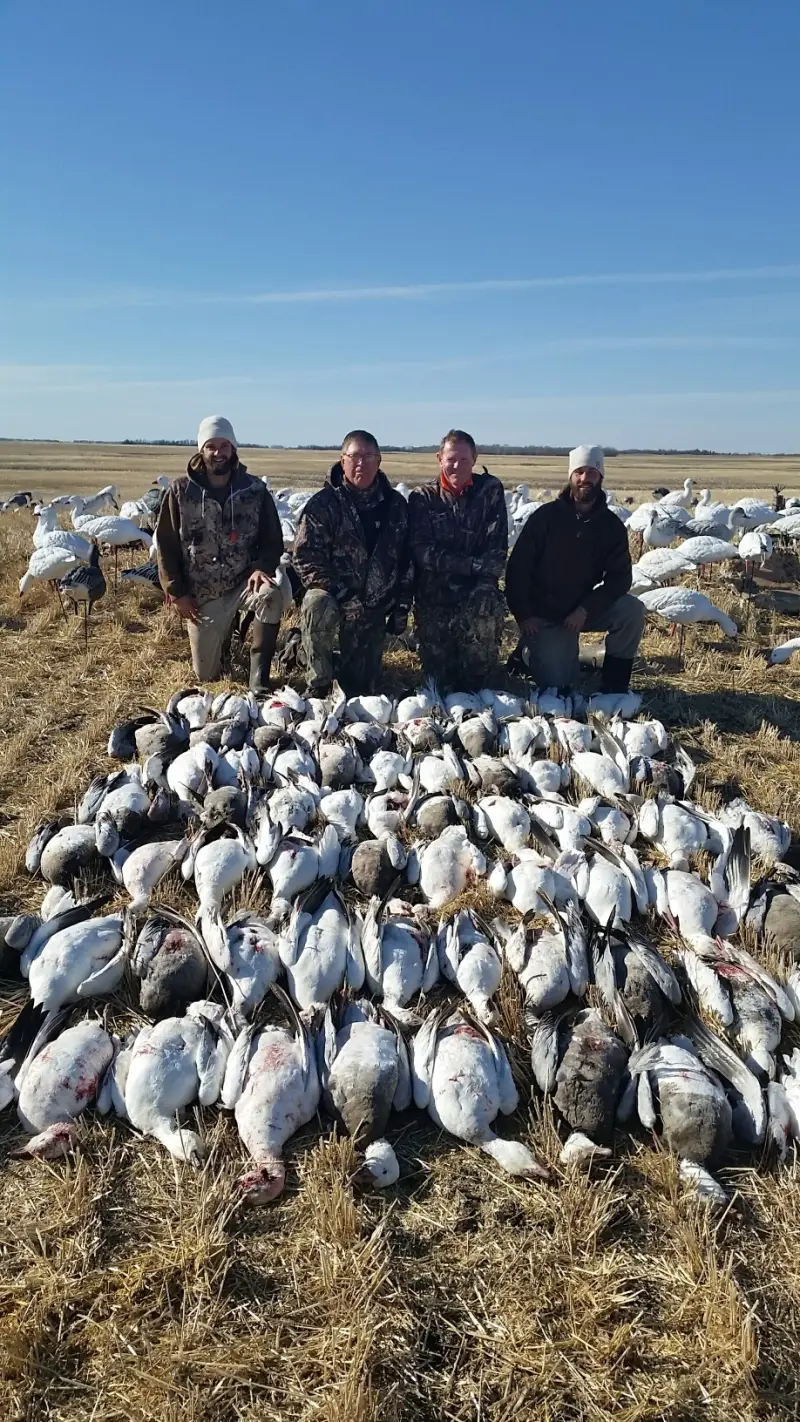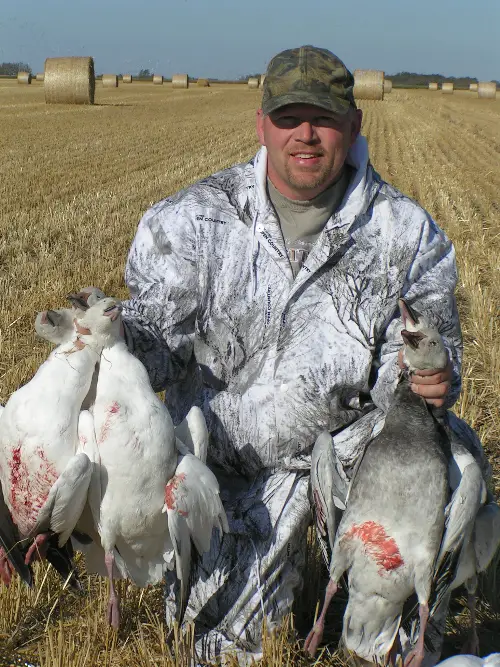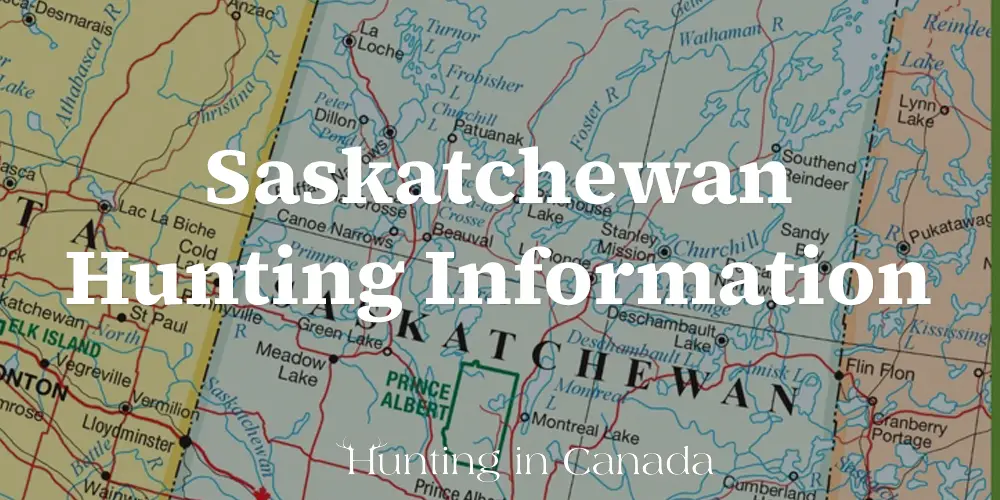Hunting, Angling and Trapping Licence (HAL)
HAL is simply your account profile with the Saskatchewan Ministry of Environment. Your HAL account is the first step in getting your licence to hunt and fish in the province.
Saskatchewan Wildlife Habitat Certificate
When buying your hunting licence, you must first purchase a Wildlife Habitat Certificate. Even if you are buying multiple licences (like a game bird hunting licence and a big game hunting licence), you still only need to buy this once a year.
Residency and Veteran Definitions
1. Saskatchewan Residents
You are considered a Saskatchewan resident if you are a Canadian resident and your principal residence is in Saskatchewan, have resided in Saskatchewan for 3-months immediately before making the application for a licence and have a valid Saskatchewan Health Services card (which includes RCMP members).
This includes persons who are regular members of the Canadian Armed Forces – stationed and residing in the province or Saskatchewan residents when recruited or deployed from the province.
2. Canadian Residents
A person who is a Canadian citizen and has their principal residence in Canada or who has lived in Canada for twelve months immediately before applying for or purchasing a licence
3. Non-Residents
Persons who are not Saskatchewan or Canadian residents.
4. Canadian Armed Forces Veteran
Saskatchewan residents or Canadian residents who are former members of the Canadian Armed Forces, have successfully undergone basic training and have been honourably discharged.
Youth Hunting Requirements
Youths 12 to 18 years of age can obtain a youth white-tailed deer licence and a youth game bird licence ( which are available for Saskatchewan Residents Only). Youth planning to hunt waterfowl must also obtain a federal migratory game bird permit.
While hunting, youth who are 12 to 15 years old must be under the direct supervision of an adult aged 18 years old at least. Subject to federal firearms legislation, youth who are 16 to 17 years of age may hunt unsupervised.
Federal firearms legislation states:
1. Any individual who does not hold a federal Minors’ Permit or federal Possession and Acquisition Licence (PAL) must be under the supervision of a person who holds a PAL, and
2. if a youth hunter (16 years old at least) possesses a federal Minors’ Permit, that individual can hunt without supervision.
Hunting Species
1. White-tailed Deer
2. Mule Deer
3. Elk
4. Moose
5. Pronghorn
6. Black Bear
7. Wolf
8. Upland Game Birds which include Ring-necked Pheasants, Sharp-tailed Grouse, Gray (Hungarian) Partridge, Ruffed Grouse, Spruce Grouse, and Ptarmigan (Willow and Rock)
9. Migratory Game Birds
Note: There are trapping seasons for different animal species, which include Arctic Fox, Badger, Black Bear, Beaver, Bobcat, Coyotes, Cougar, Fisher, Fox (Red, Silver, Cross), Lynx, Marten, Mink, Muskrat, Otter, Raccoon, Skunk, Squirrel, Weasel, Wolf, and Wolverine.
Hunting Seasons
Hunting seasons differ for each hunting species and hunting zone. For instance, the regular season dates for the black bear are usually during the months of April through June and August through October.
The regular hunting season dates for the wolf are usually during the months of October through March, while the regular season dates for elk are usually from August to September. And for moose, their regular season dates are usually from September to November.
When it comes to sharp-tailed grouse, gray (Hungarian) partridge, ruffed grouse, and spruce grouse, their regular hunting season dates are usually from September through December.
The hunting season dates for ducks, sandhill cranes, coots, and snipe are usually during the months of September through December.
Hunting Zones
Here are a few hunting hotspots for black bears, moose, and elk:
1. Black Bears
When it comes to black bear hunting, the wildlife management zones (WMZs) along the Forest Fringe and the southern Provincial Forest are two particularly bright areas.
2. Moose
Moose are found in all major habitat zones of the province, but the hunting prospects vary. Moose numbers are down in the boreal forest which reduces the hunting opportunities. In the Farmland WMZs, however, moose are doing well. In the Farmland WMZs, the hunters’ success rate has been high in recent seasons.
3. Elk
The Elk population is considered stable, increasing or even abundant in most WMZs. During the regular season for elk in the Forest and Forest Fringe WMZs, hunter success is expected to be normal despite the severity of the winter. Hunters drawn for cows or bulls in the Prairie and Parkland WMZs have an excellent chance of success.
Exporting Game Birds
1. Sandhill crane hunters ( who are U.S. residents ) do not require a CITES permit when returning home after their hunt, provided the cranes are in a frozen, fresh, or salted condition and are part of their personal baggage.
2. If the hunter accompanies their game birds in transit, their game bird hunting licence and their game bird hunting ledger will serve as a permit to export legal limits of game birds.
3. You can not ship or transport migratory birds that belong to another individual into the U.S.
4. The fully feathered head or at least one fully feathered wing must remain attached to the migratory game bird
5. Bulk freezing or bulk packaging is not allowed. All game birds must be packaged in a manner that makes it easy to determine the species and number.
6. If packages (which contain upland game birds) accompany the licensed hunter in transit, labelling is not required
7. If the legal limit of migratory birds taken accompanies the licence holder in a private vehicle, labelling is not required
Exporting Big Game
1. There is no need for an export permit if the hunting licence holder travels with the game
2. The cape of a big game animal may be transported out of Saskatchewan without a hide seal attached if the antlers and the cape (attached to the skull plate with attached seal) travel with the licence holder
3. You can export the hide of a big game if a hide seal is attached.
4. You must mark packages for shipping wildlife/wildlife parts within or outside the province with the sender’s name, address, contents, and hunting licence or permit number
5. In order to export black bears out of Canada, you must have a CITES Permit. Hunters from the United States accompanying their tagged black bear (raw and untanned) are exempt. But, in order to export tanned or processed pelts, having a CITES permit is a must.
An export permit is required to export any wildlife/wildlife parts that are not accompanying the licensed hunter or any wildlife that is not taken under the authority of a hunting licence out of the province, which includes antlers (other than shed antlers), skulls or claws.
Hunting Outfitters in Saskatchewan
Here is a list of the hunting outfitters in Saskatchewan:
4. Stillar’s Western Outfitters
5. Saskatchewan Big Buck Adventures
8. Turtle River Whitetail Outfitters
9. Harrison Crossing Outfitters




